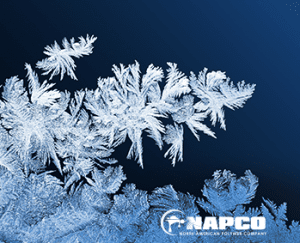Tips for Refinishing When the Weather Gets Cold

Problems You May Encounter
One of the first things you will probably notice when starting a refinishing job in the winter is that the products have become more viscous. Even the short period of time between transporting the products from your car to the home you are working in can be enough to affect the consistency of your refinishing product. When the product becomes thicker and more sticky, this makes it more difficult to work with. It changes the way that the material coats the surface and can cause the finish to look different.
In addition to changing the way the coating product looks and feels, cold weather can also prevent the coating from properly curing to the surface of the bathtub or countertop. The coating can stay soft and undried for a longer period of time than is normal, potentially causing conflict with the homeowner if they expected the job to be finished at a certain time.
The third thing to watch out for is that cold weather can cause condensation to build up on the surface of the tub. If the surface is at all moist when the coating is applied, it can cause the coating to fail or not stick, as well as dulling the finish and other issues.
Solutions for Refinishing in the Cold
Fortunately, there are many simple steps you can talk to ensure that the room temperature and temperature of your coating materials are at the correct levels. To warm up your coating product and make it more liquid again, try dunking the container into a sink of warm water and letting it soak for 20 minutes or so. If this doesn’t work, you can try a more targeted way of reducing the viscosity of your refinishing product. Increase the speed of your reducer to heat up the coating products, and try adding a little acetone to speed up the process.
If the room is too cold and is causing the surfaces to remain below acceptable levels, you just have to warm it up. This will most likely make you more comfortable as well. You can ask the homeowner if they are okay with you turning up the central heating, or if that is not an option you can bring along your own space heater. Just be extra careful if you do use a space heater, as these appliances are known to be tricky and can cause serious accidents if placed too close to flammable materials.
To determine that the surface of the bathtub or countertop is at an acceptable level, and to be rid of accumulating condensation, you can use a heat gun and laser thermometer. These can be purchased at most home improvement stores.
We hope these suggestions will help you avoid any troublesome situations once the winter weather is here. Feel free to contact us if you have any other cold weather refinishing questions!
